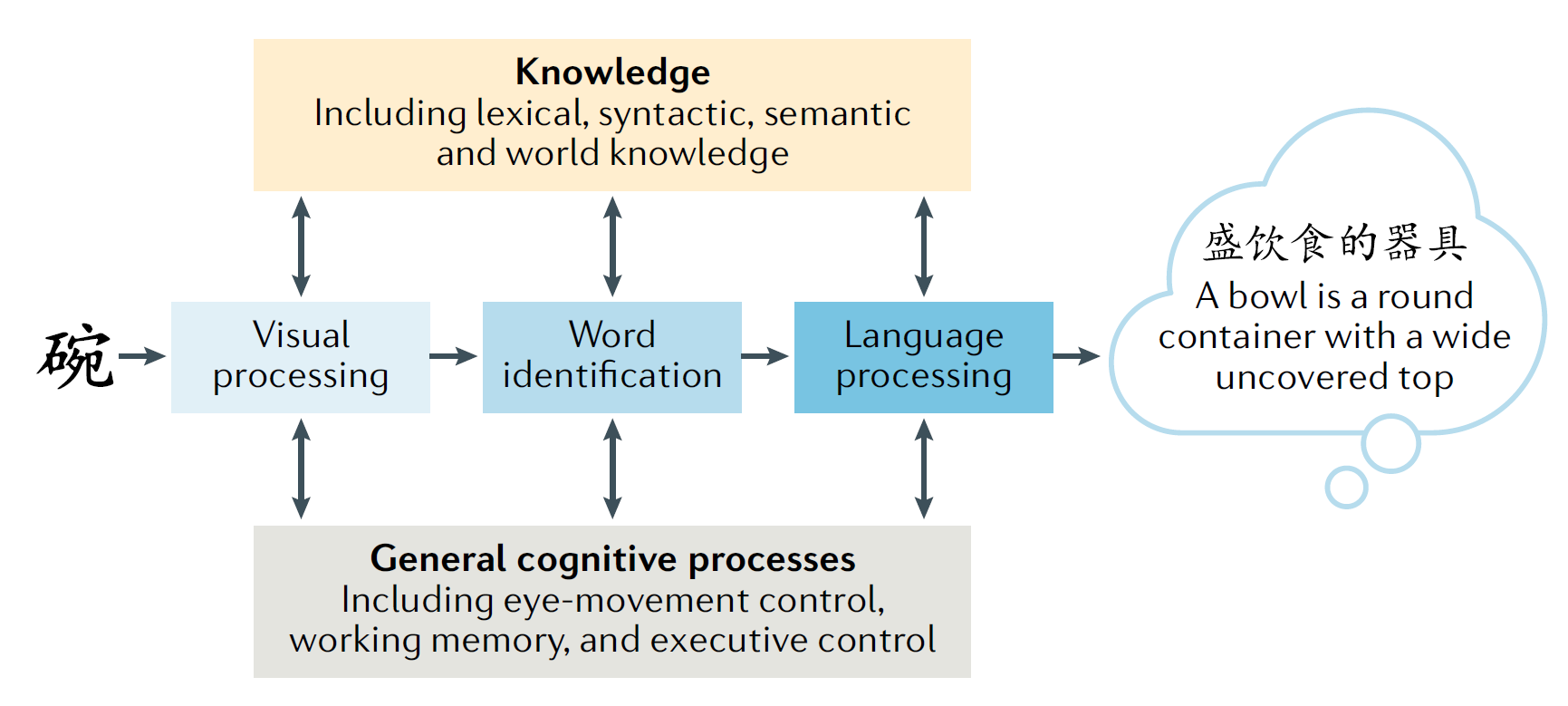Published paper about Universal and specific reading mechanisms across different writing systems
There are about 7,000 languages in existence in the world, and hundreds of them have written forms with very different writing symbols. For example, "cat" (Chinese) and "cat" (English) both mean cat, but the written symbols vary greatly. For decades, researchers have been working to comprehensively analyze the cognitive mechanisms of human reading. Most of the previous models and classical theories of reading are based on the study of pinyin script, but to what extent can these models be extended to other writing systems? What are the universality and specificity of the reading mechanisms of different writing systems, each with its own characteristics and similarities? Answering these key scientific questions is a necessary step towards a comprehensive analysis of the human reading mechanism and is of great theoretical importance.
A review article entitled " Universal and specific reading mechanisms across different writing systems" was published in Nature Reviews Psychology by Xingshan Li's research group at the Key Laboratory of Behavioral Sciences, Chinese Academy of Sciences, which systematically discusses the commonality and specificity of different writing systems, as well as the universality and specificity of human reading cognitive mechanisms.
The article begins by describing the unique properties of different writing systems. These idiosyncrasies are manifested in the way text symbols encode sound, the visual form of text symbols, the physical spatial layout of words and sentences, and word formation. These unique properties of writing systems lead to different cognitive mechanisms in readers' reading of text in different languages, specifically in terms of visual recognition to semantic access pathways, perceptual breadth, word cut-off and eye-hopping target selection mechanisms, and compound word processing.
Although there are significant differences among different writing systems, there are still some common reading processing mechanisms among different writing systems: the main cognitive stages involved in the reading process of different writing systems are basically the same; words are important processing units in the reading of different writing systems; the way of attention transfer in reading is basically similar, etc. There are two main reasons for these universal cognitive mechanisms: first, reading different writing systems all require the participation of general cognitive processes such as working memory, long-term memory, and executive control, and these cognitive processes are universal and general among different writing systems of reading; second, there are some common features among different writing systems, and these common features also cause the universality of cognitive mechanisms.

Figure 1. Universality of reading mechanisms in different writing systems
The article points out that there are both universal and specific cognitive mechanisms between reading in different writing systems. Most universal cognitive mechanisms are general and abstract in character, while the specific realization of these universal principles in different writing systems varies, reflecting writing system-specific cognitive mechanisms.
The article also discusses important insights from the study of non-phonetic scripts. First, comparing the results of studies of different writing systems can lead to conclusions that cannot be drawn from studies of a single writing system. In addition, examining multiple writing systems can help reveal the specific implementation of universal reading mechanisms. The article emphasizes that there is no universal model of reading that is applicable to all writing systems, so researchers need to consider the applicability of existing models to specific writing systems when interpreting their findings.
The article concludes by emphasizing the necessity of research on different writing systems for a comprehensive understanding of the universality and specificity of reading mechanisms, calling for the need for future research to examine how the characteristics of writing systems lead readers to produce specific reading mechanisms, and the applicability of reading models.
The study is collaborative research between the Institute of Psychology and the University of Turku, Finland. The Institute of Psychology is the first author and corresponding author. The research was co-funded by the National Natural Science Foundation of China (31970992) and the International (Regional) Cooperation and Exchange Program (NSFC 62061136001/DFG TRR-169). The research was published online in Nature Reviews Psychology (full text available at https://rdcu.be/cHvDa).
The journal is Nature's comprehensive psychology journal that just launched in January 2022. It is the first in the Nature Reviews series to focus on the social and behavioral sciences and focuses on publishing authoritative, easy-to-read topical reviews, opinion and commentary articles covering the entire field of psychology and its applications with broad social impact.
Paper information.
Li, X.*, Huang, L., Yao, P. & Hyönä,J. (2022). Universal and specific reading mechanisms across different writing systems. Nature Reviews Psychology. https://doi.org/10.1038/s44159-022-00022-6
Other relevant papers.
Li, X.*, & Pollatsek, A. (2020). An integrated model of word processing and eye-movement control during Chinese reading. Psychological Review, 127(6), 1139-1162. http://dx.doi.org/10.1037/rev0000248

